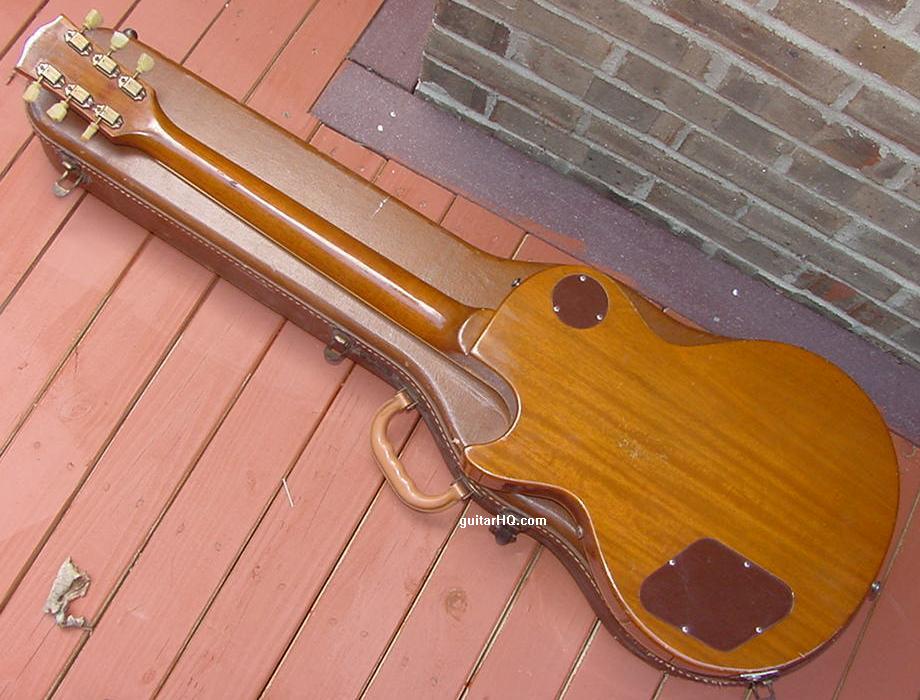
|
Description: 1952 to 1955 Gibson Les Paul Standard Goldtop solidbody guitar If you have a vintage Gibson Les Paul Goldtop guitar for sale (any year from the 1950s), please contact me at cfh@provide.net
General Comments: Les Paul himself has said he told Gibson about the tailpiece design flaw when he saw the first production models. He explained that the strings were supposed to wrap *over* the bar, not under it, and that the neck angle should be steeper to accomodate this difference in action at the bridge. Apparently it took Gibson a whole year to figure out that maybe Les Paul actually knew what he was talking about! Because of the 1952 tailpiece problems and complaints, by early 1953 the "wrap around stop bar" tailpiece/bridge combo was adopted by Gibson on the Les Paul Goldtop. This rectified the playability problems (the strings wrap over the *top* of the tailpiece, allowing palm mutes). These models are quite nice (though many players still complained because the stop bar can not be intonated perfectly). The early 1953 wrap-around models still had a shallow neck angle, limiting the downward adjustment of the stop bar. But this had the added benefit of keeping the strings close to the pickups, making early 1953 models with wrap tails very loud guitars. But as 1954 approached, the neck angle increased allowing more downward adjustment of the wrap around tailpiece. Regardless the 1953 stop tail Les Paul Goldtops had better playing action, and the tuning was more stable since the stop bar was now anchored to the top of the guitar allowing no movement side-to-side. The previous problem of right-hand palm muting was solved, as was the tuning problems from tailpiece movement. Although this was a big improvement on the 1952 design, it still had its limitations in respect to intonation. The conversion from the trapeze to wrap-around tailpiece happened around serial number "3 1300" (with "3 1314" for example having a wrap-around and "3 1359" having a trapeze, so there was some overlap no doubt). Earliest seen wrap-around is serial number "3 0995", so there was definately a mix of wrap-around and trapeze tail Goldtops in the "3 1000" to "3 1400" serial number range). By 1953 a rhythm/treble plastic surround on the pickup selector switch was added. By around serial number "3 22xx", Gibson changed the control cavity route slightly too (no longer routing the ground channel going to the end pin for the original trapeze tailpiece). The 1950s Les Paul guitars were officially called the "Les Paul" model. This quickly became known as "GoldTop" due to the gold top finish. Although most Gold Tops have exactly that, a gold colored maple top with a natural brown back, a few were made with an all-gold finish. Personally I don't like the all-gold models as much, as the gold finish does not wear well (especially on the back of the neck). The gold finish was clear lacquer with bronze powder. As a result a greenish hue can be seen on many Gold Tops where the bronze particles in the finish oxidize (mainly due to human sweat contact). The green affect shows up much greater on the all-gold models, potentially making them look pretty ugly.
See the 1955 to 1958 Gibson Les Paul Goldtop. If you need to figure out the exact year of your Gibson Les Paul Goldtop, use the Serial Number. See the Gibson Serial Number Info web page for help determining the exact year. If you have a vintage Gibson Les Paul Goldtop guitar for sale (any year from the 1950s), please contact me at cfh@provide.net
|
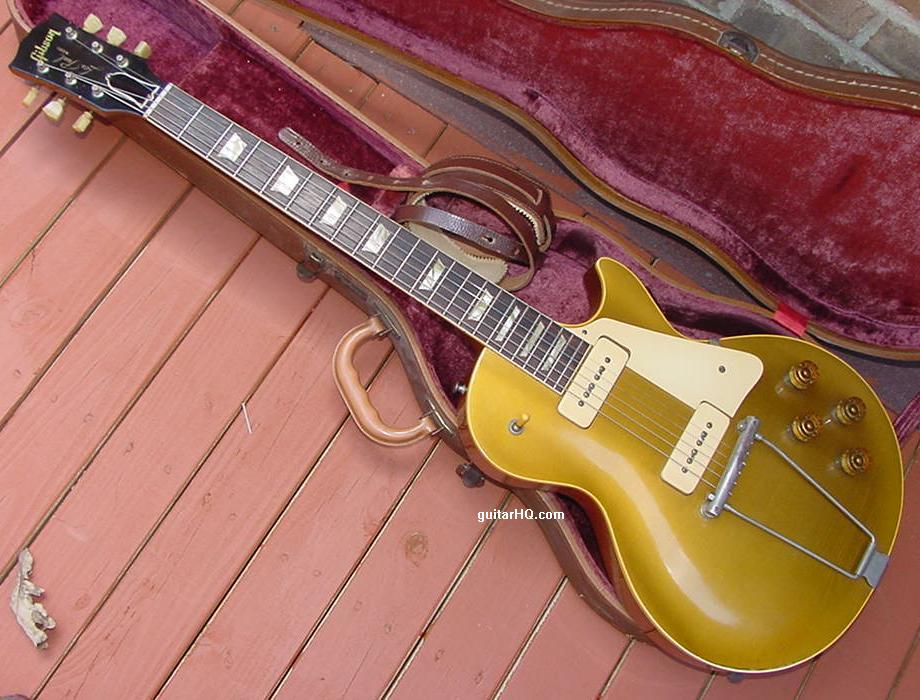

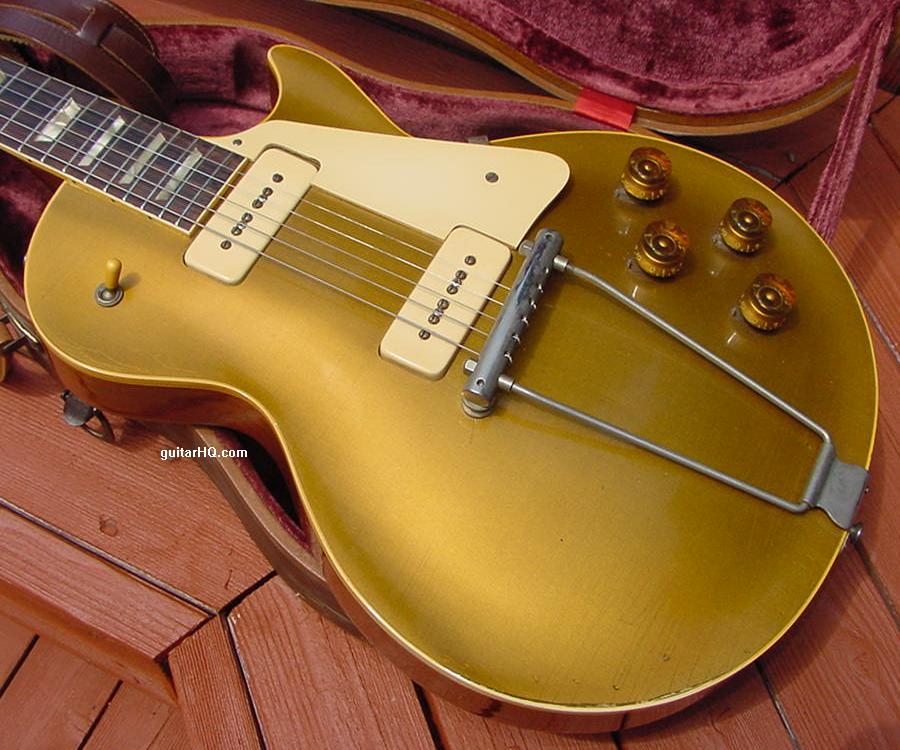
The jackplate appears to not be original (should be cream colored plastic).
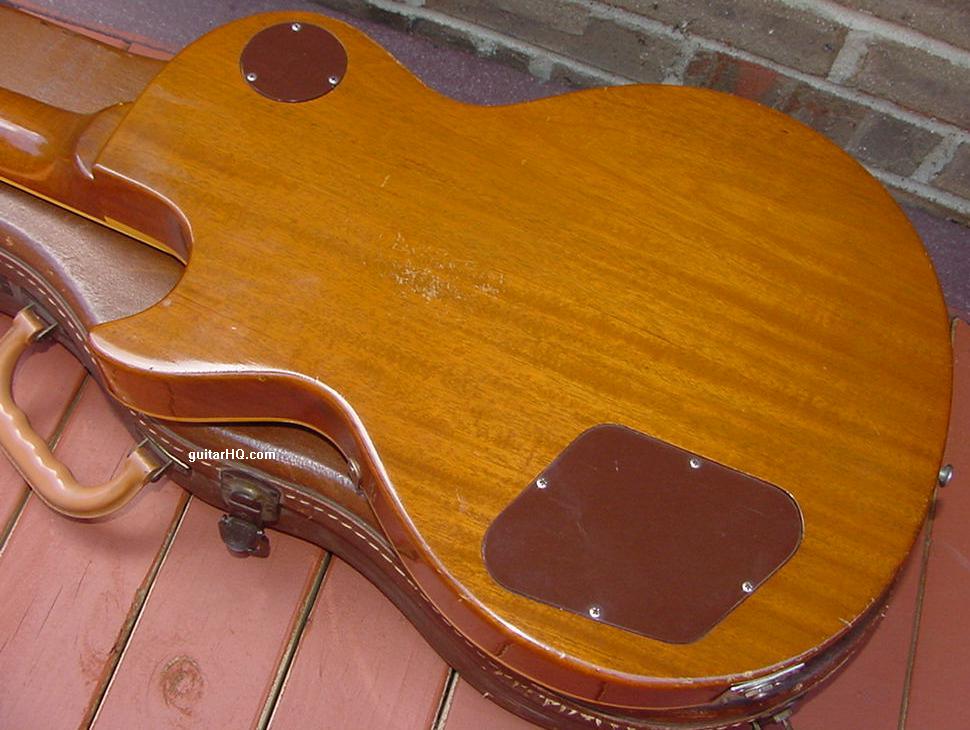
1952 Gibson Les Pauls do not have serial numbers like the 1953 and later models.
The line down the back of the neck is not a crack, but is a mineral streak.
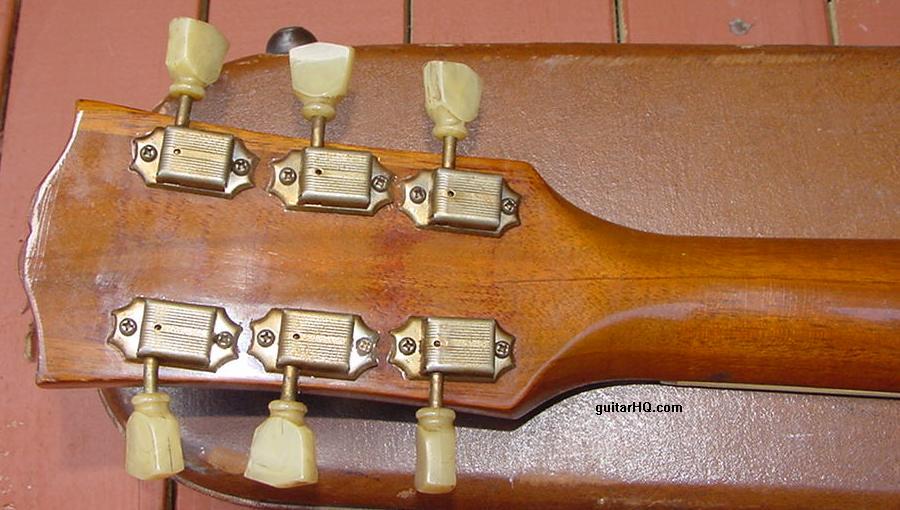
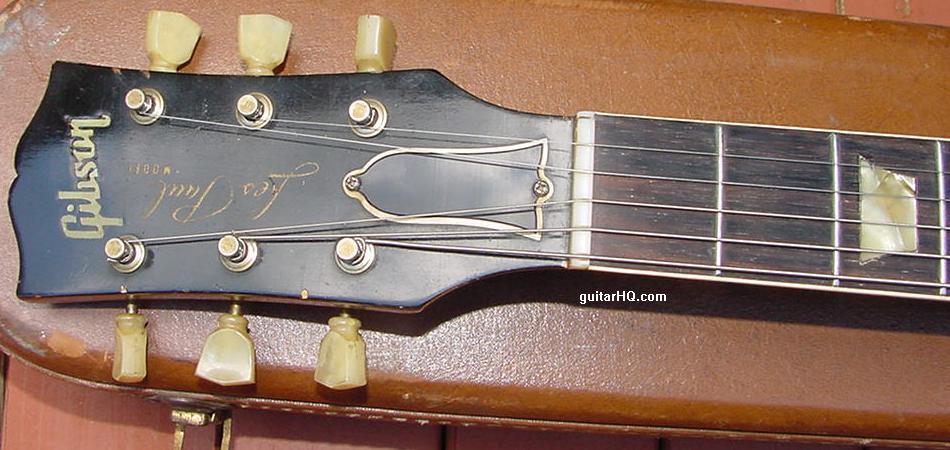
The 1952 Gibson Les Paul rear cavity route showing the large square channel for the ground wire
to the trapeze tailpiece. This channel disappeared from the control cavity route in 1953.
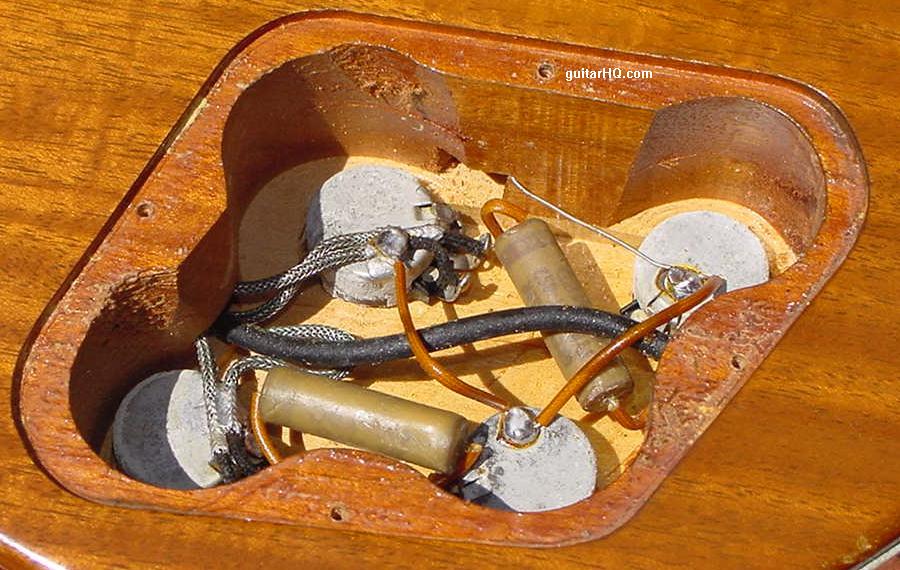
The notorious Les Paul tailpiece with the strings wrapped *under* the bar.
Also notice the tailpiece "feet" are pressure mounted to the top, as
there are no holes or studs to hold them in place.
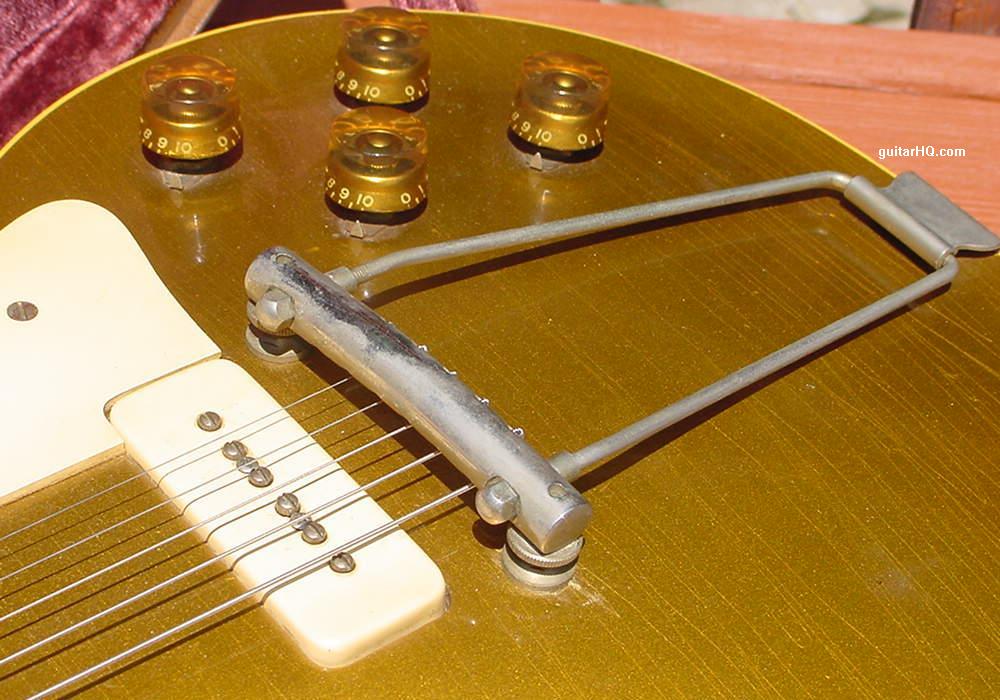
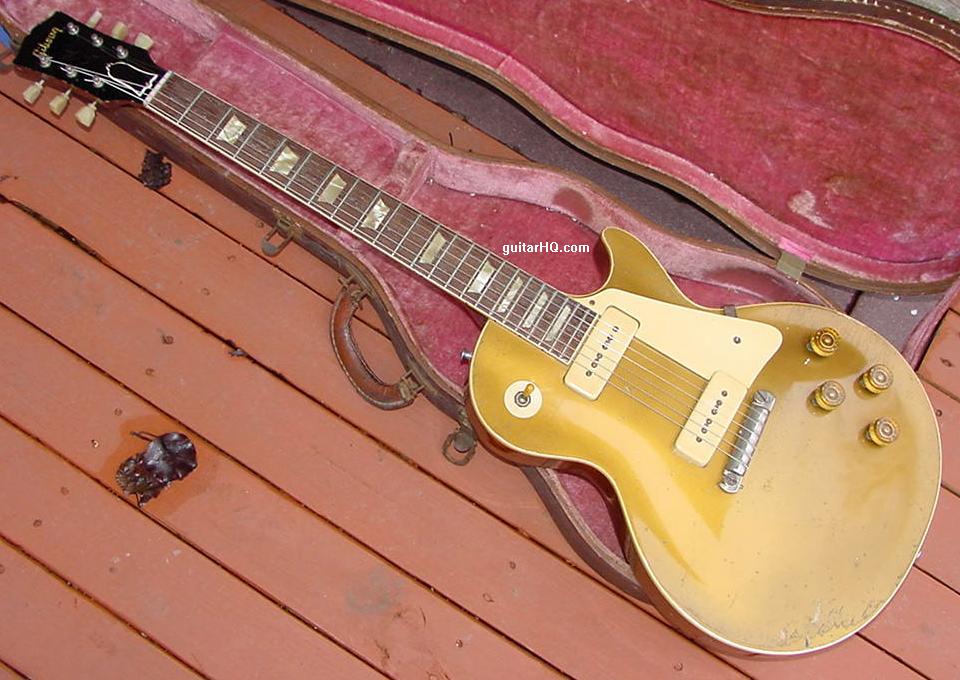
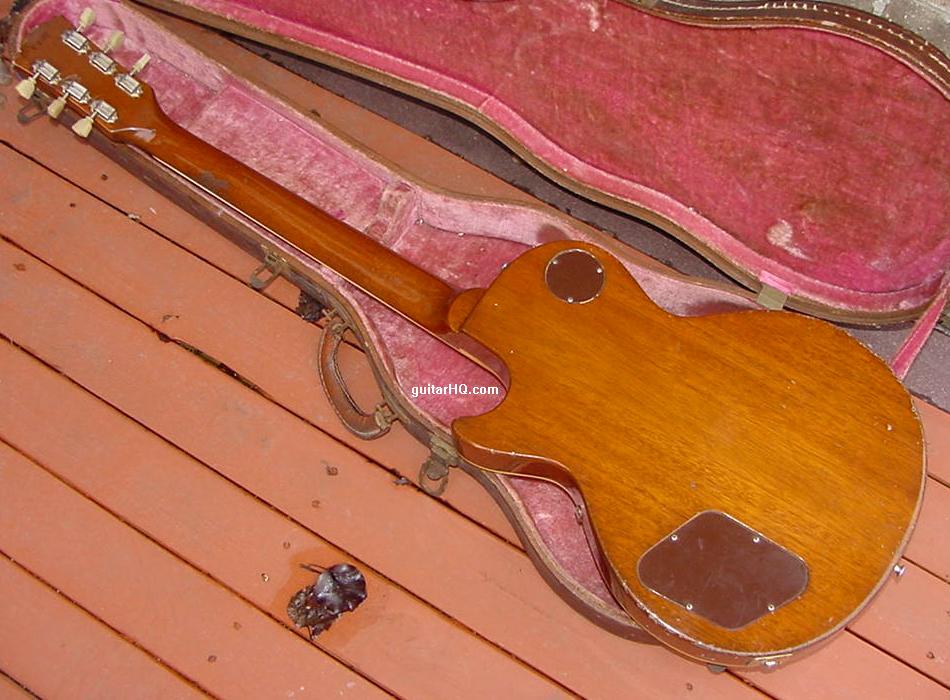
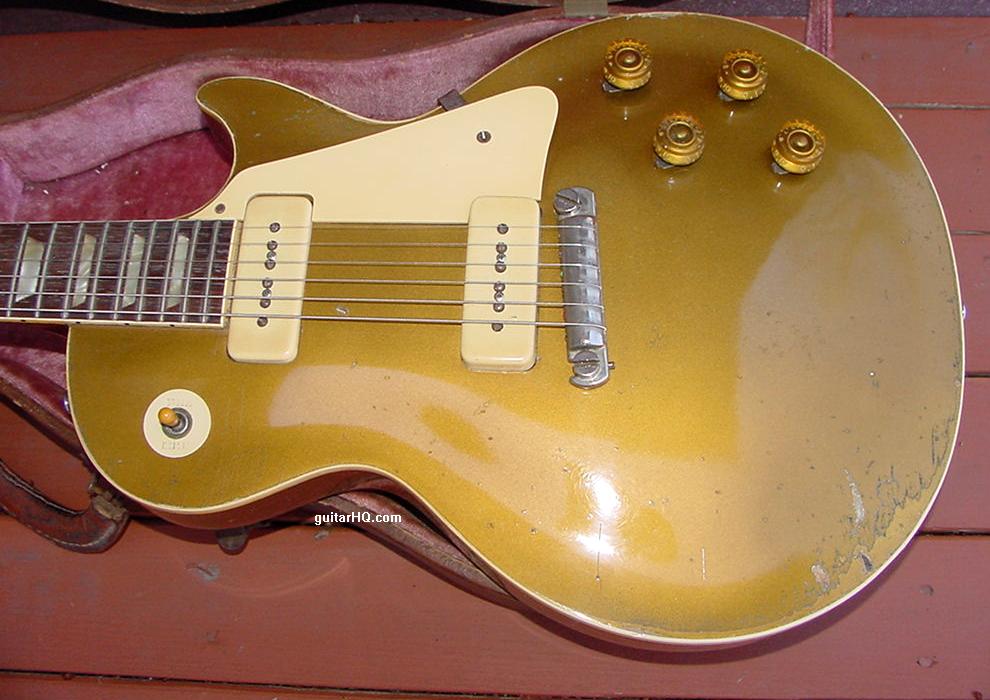
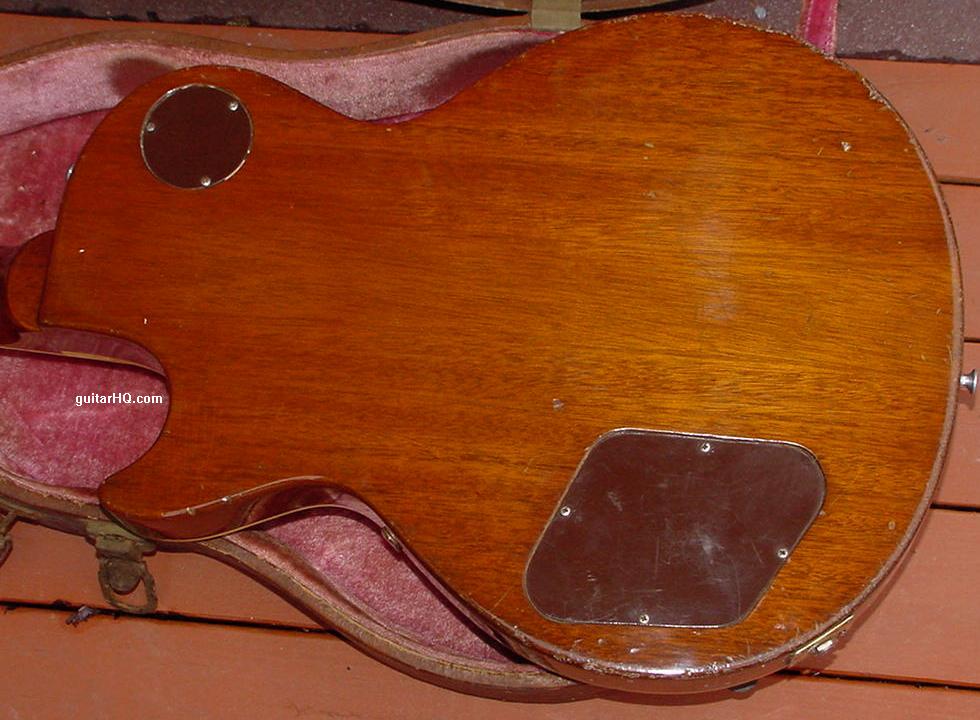
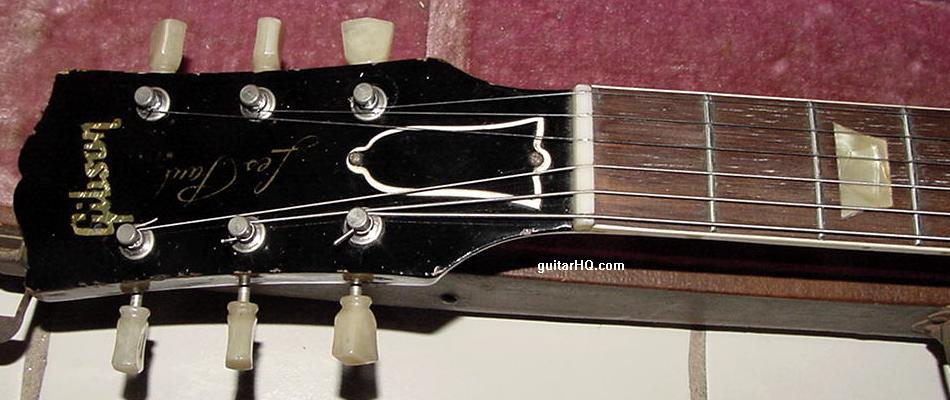
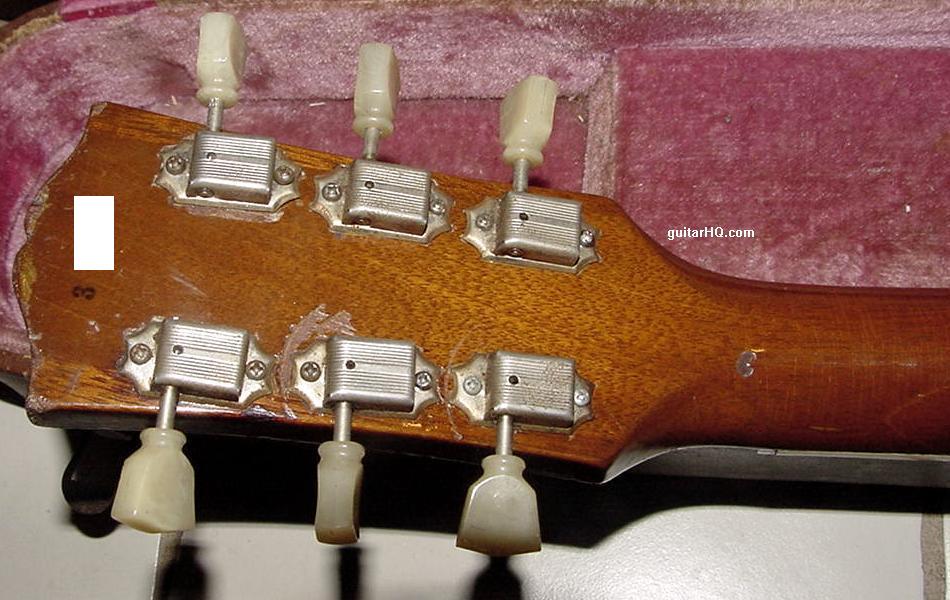
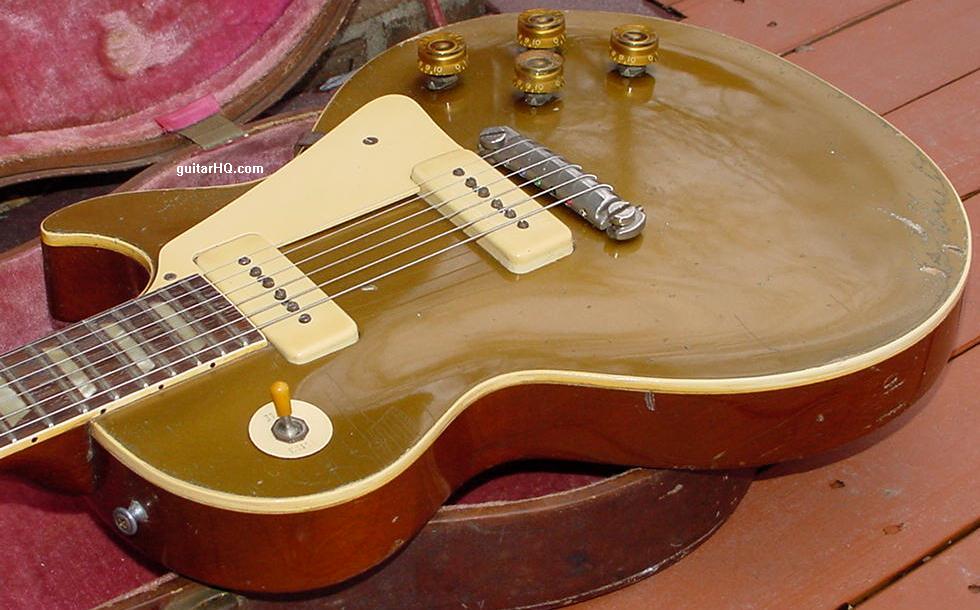
The clearcoat has been worn away on the right forearm portion of the body,
showing the layer of bronze metallic dust mixed into clear lacquer, giving the goldtop finish.
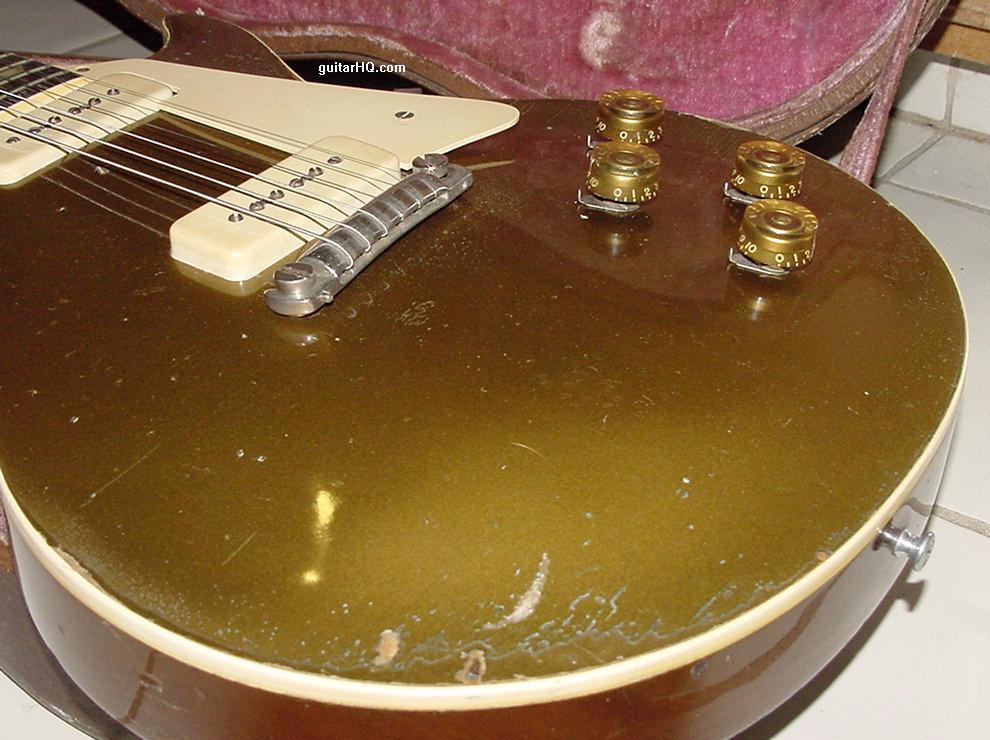
The control cavity still has the ground wire route that went to the trapeze
Les Paul tailpiece, as used on the 1952 models (this route is not used on
the wrap-around tailpiece models like this one). This route existed for
part of 1953 until it was no longer made into the bodies (since it was no longer needed).
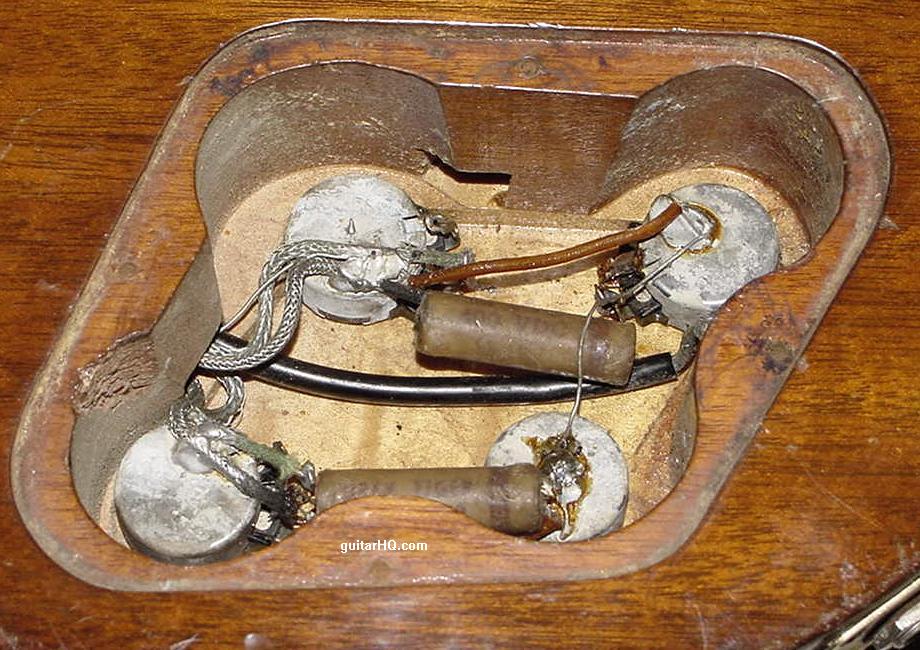
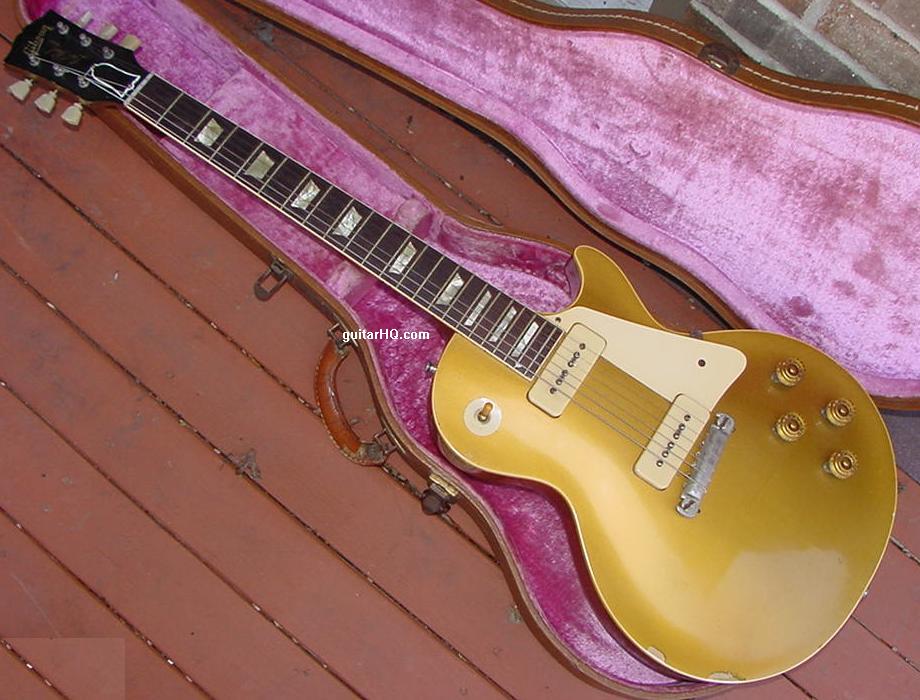
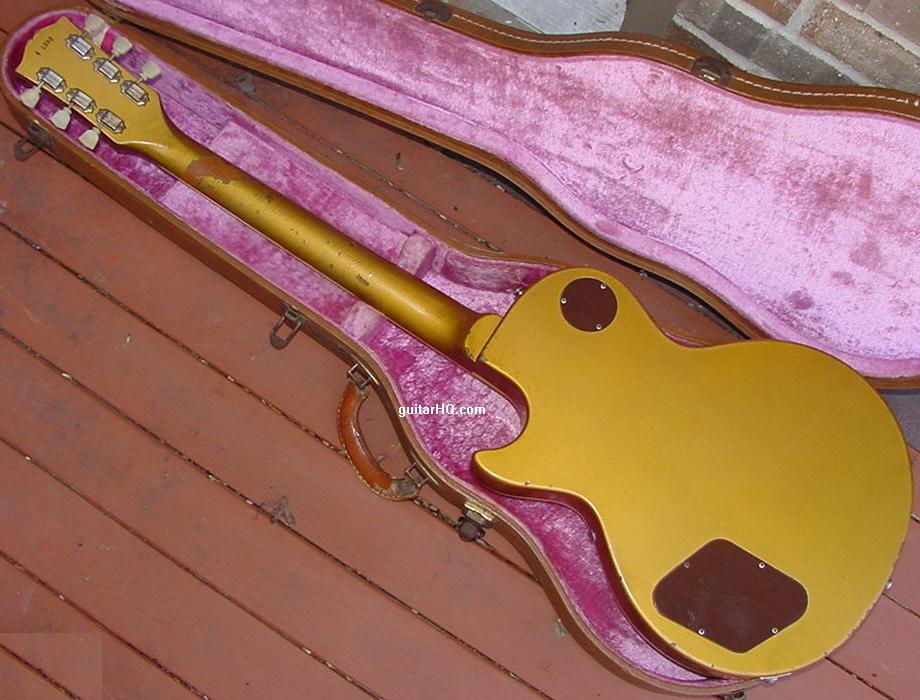
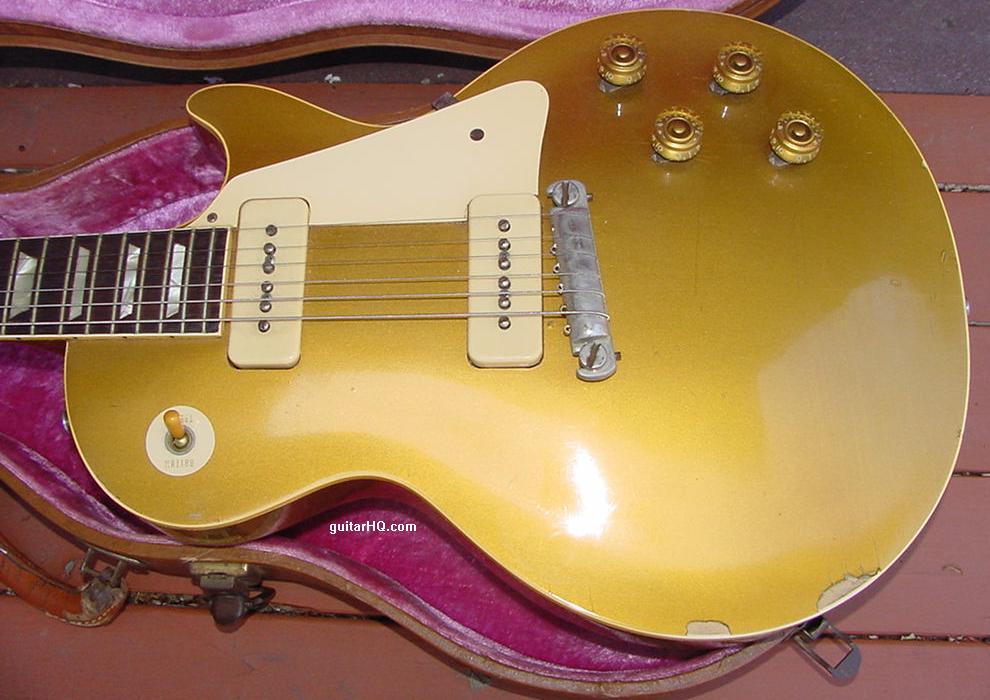
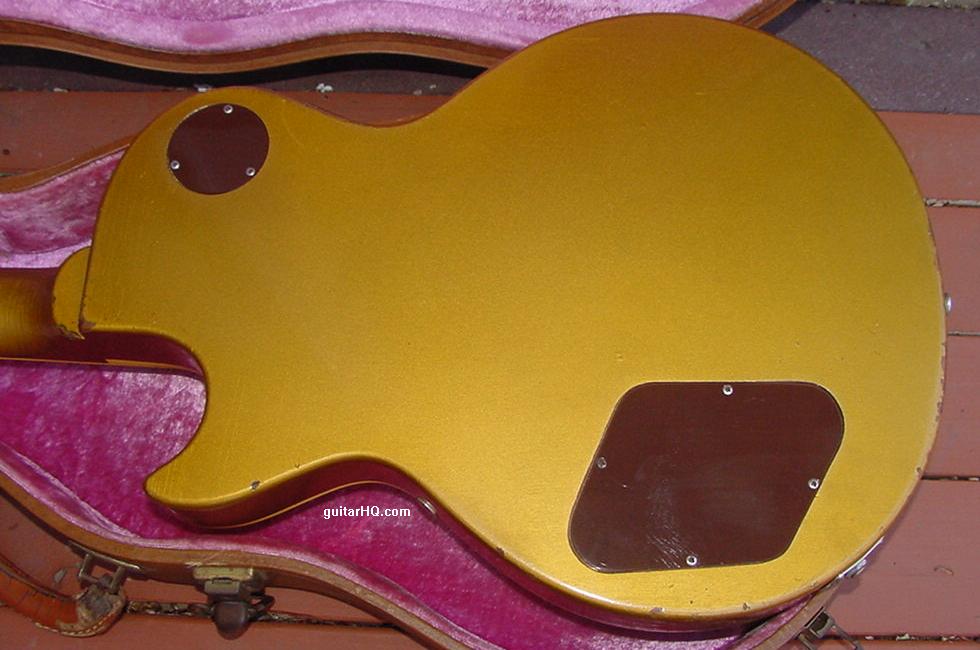
1954 control cavity route: the ground wire channel seen in the 1952/1953 models
going to the trapeze tailpiece is now gone.
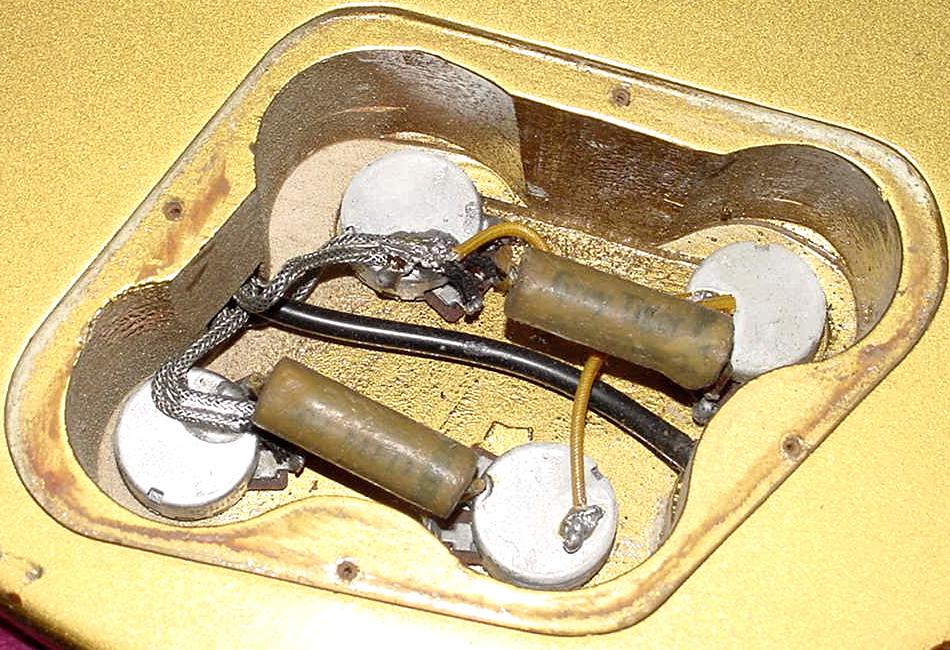
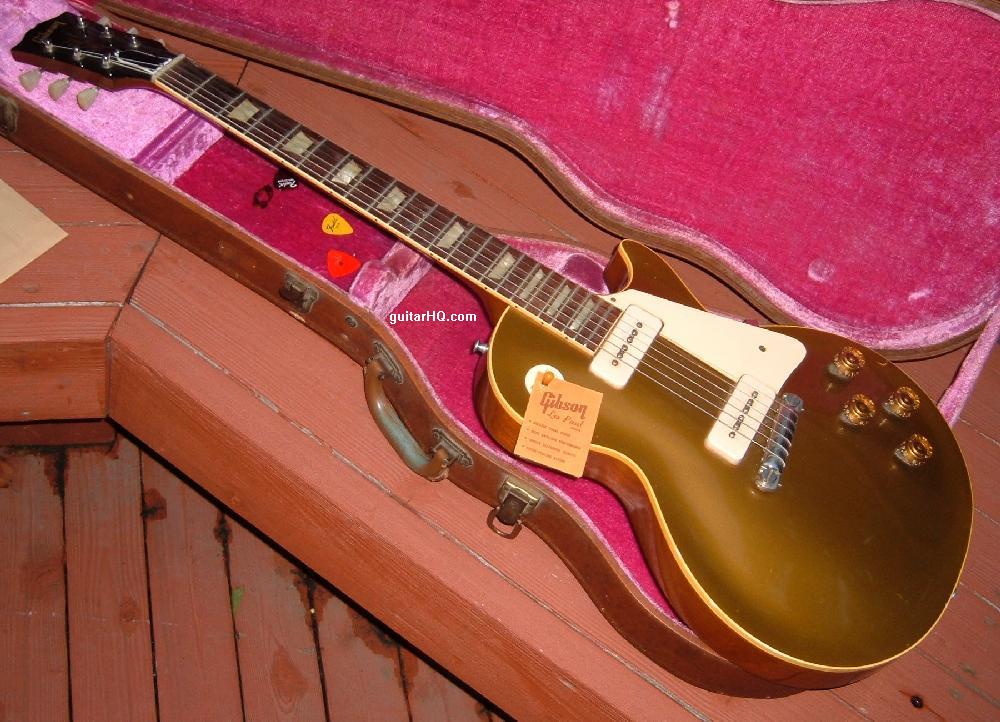
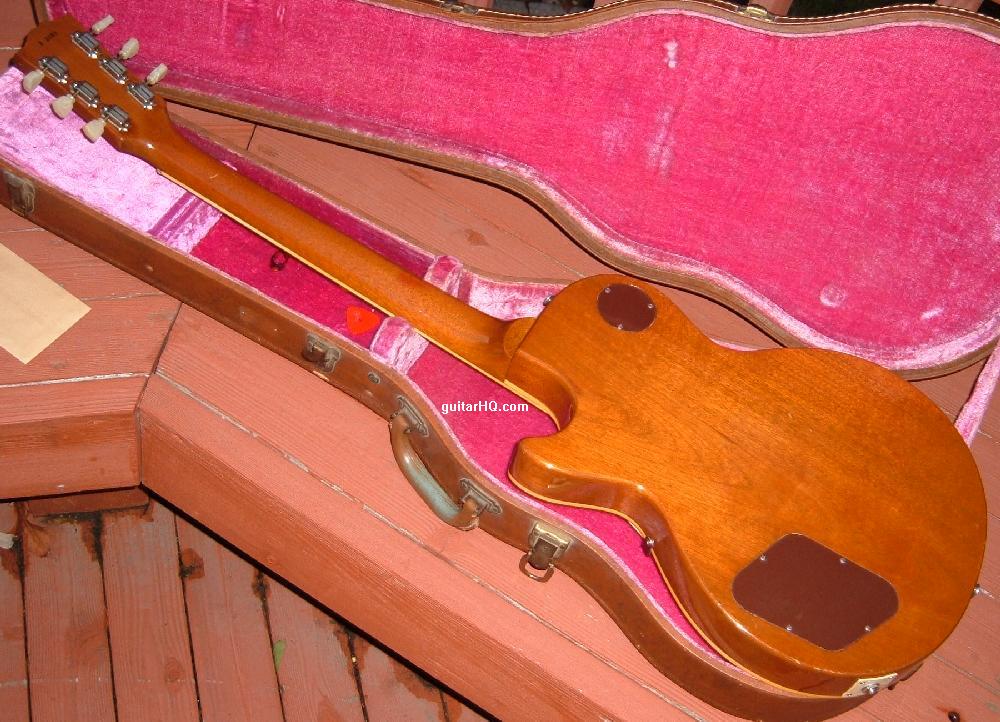
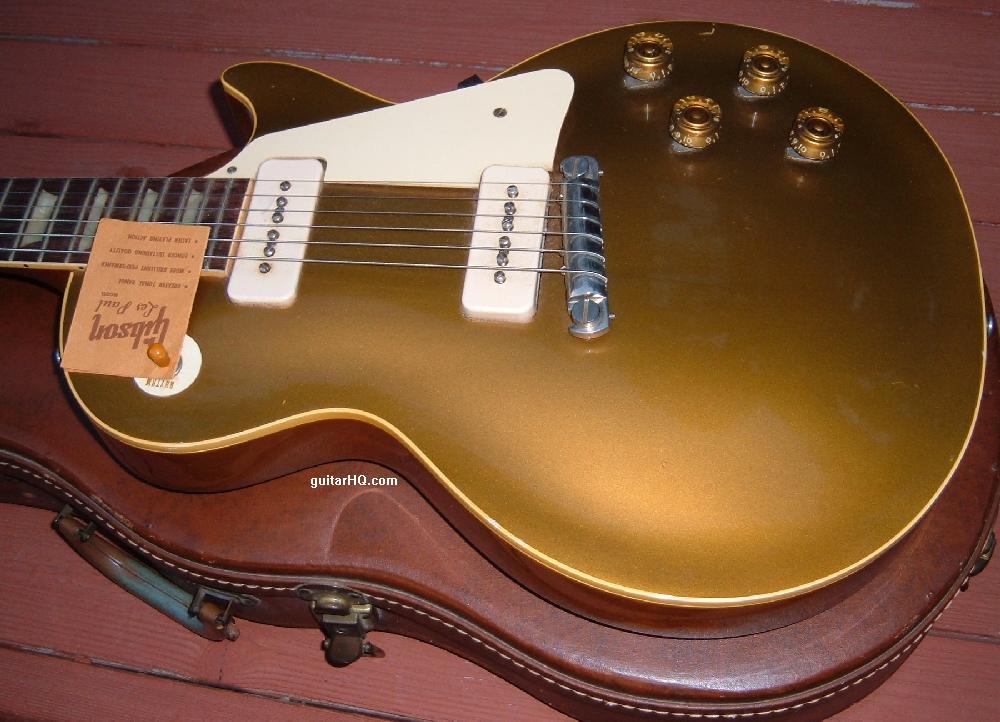
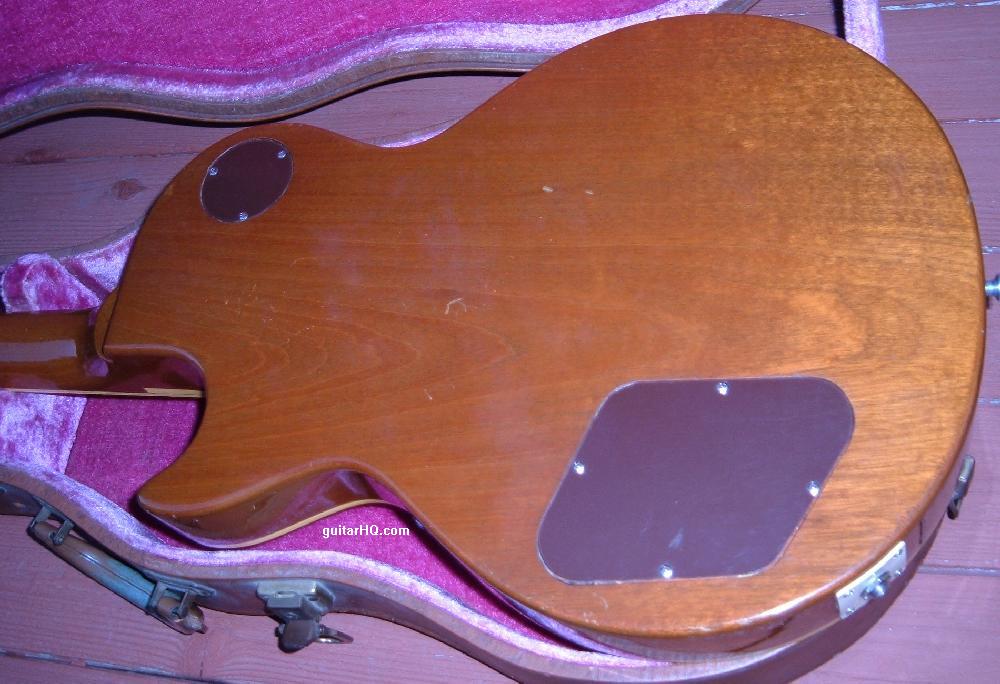
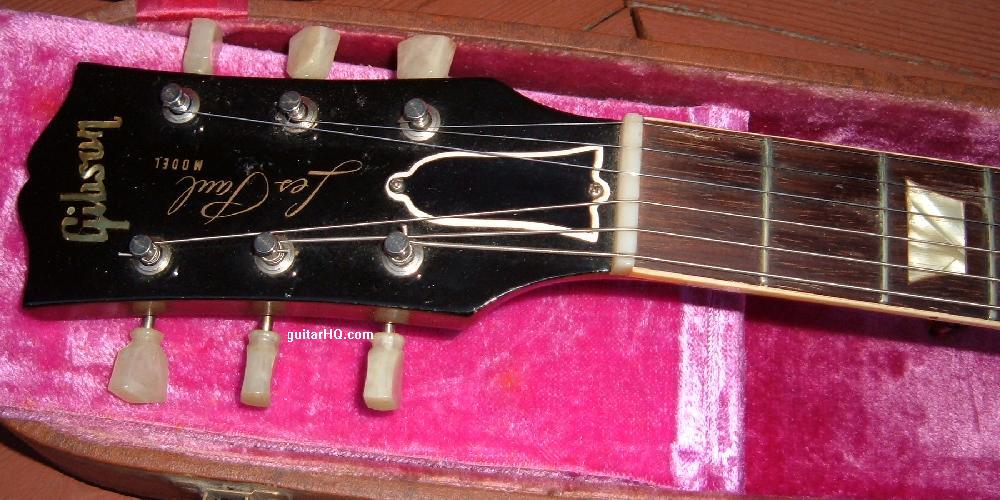
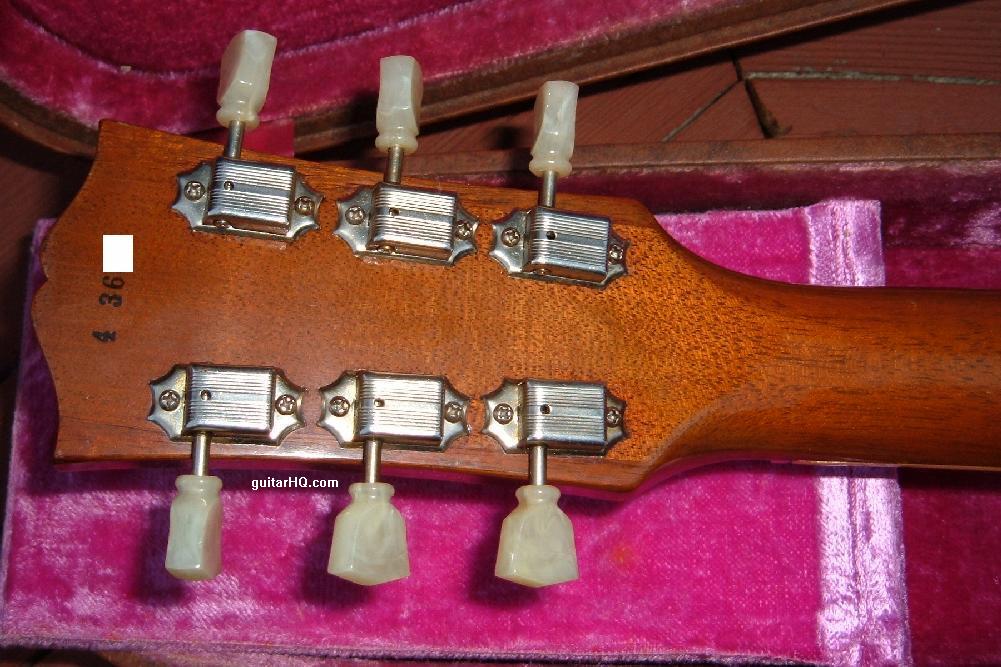
1953 to early 1959 style Rhythm/Treble switch ring plastic.
If anyone has an original R/T ring for sale I sure could use one!
Compared to 1970s R/T rings, the 1950s are thinner plastic (.020" thick to
be exact, almost like a thin potatoe chip).
The font and style of plastic is quite different too, as well as the fact that the
rings in the 1970s are molded plastic and the font is different. The 1950s rings
where stamped on a press, and the font/color was heat pressed,
and the plastic has a surface pattern which
is quite faint. If you turn the ring over you should be able to make out a faint
series of "lines" in the plastic. Also the edges often show a faint residue
of where the die stamped it out, and the lettering often shows through
on the back side. The tall narrow font is also unmistakeable,
though again because "rhythm treble" where stamped into the plastic,
some are deeper stamped than others. That is why, depending on the condition
of the guitar and overall usage, the gold paint in the lettering (which is the same
lacquer used to spray the gold top) is often either
missing, quite faint, or turned a greenish color. In 1957 the R/T ring
plastic got slightly thicker going from .020" thick to .025" thick.
Then in early-1959 the R/T ring's font changed. This newer variant
existed through 1960. After 1960 Gibson was not using cream colored
plastics on any guitars (until 1968 when the Les Paul was "reissued"),
so cream colored Rhythm/Treble rings were no longer made from 1960 to 1968.
The 1970s and later version was completely different (molded, not stamped).
The 1968 switch ring is usually a bit more "pink" in color than
the 1950s version. The 1968 lettering was applied differently too,
though it's basically the same font as the 1959/1960 R/T ring.
The 1959/1960 switch ring lettering was (relatively) deeply
embossed into the plastic and colored with the same gold
paint as they used on Goldtops of the era. The 1968 lettering was lightly embossed
with a gold "foil" - this lettering appears to "float" on top of
the ring. The actual font of both the 1959/1960 ring and the 1968
ring appears to be the same, but the individual letters of the
1959/1960 variant are often a bit "thinner".
So the 1968 and 1959 "series2" R/T rings are similar,
yet very different. Different plastic (color and composition),
same font, different (foil on the '68's, think "Goldtop paint" on the '59/'60's)
lettering material, different inner and outer edges, etc.
The 1959/1960 style are almost
"bleach white" or pink when compared to even the earliest 1968 R/T switch rings.
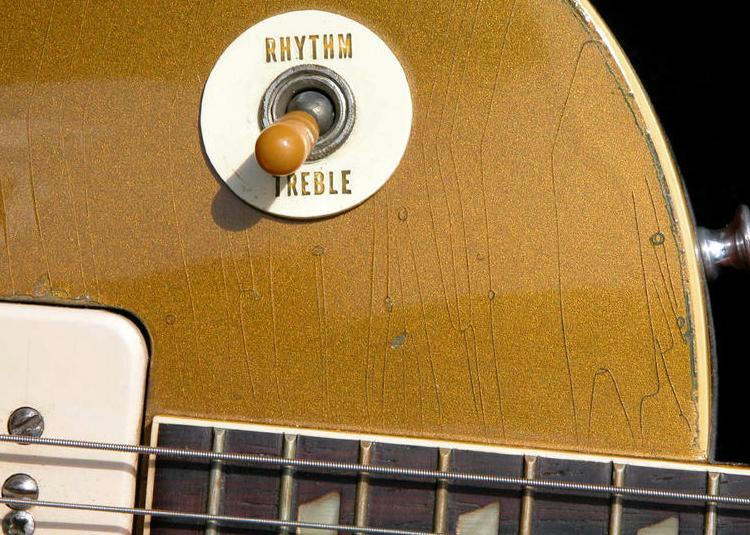
Two original 1953 to early 1959 R/T rings.
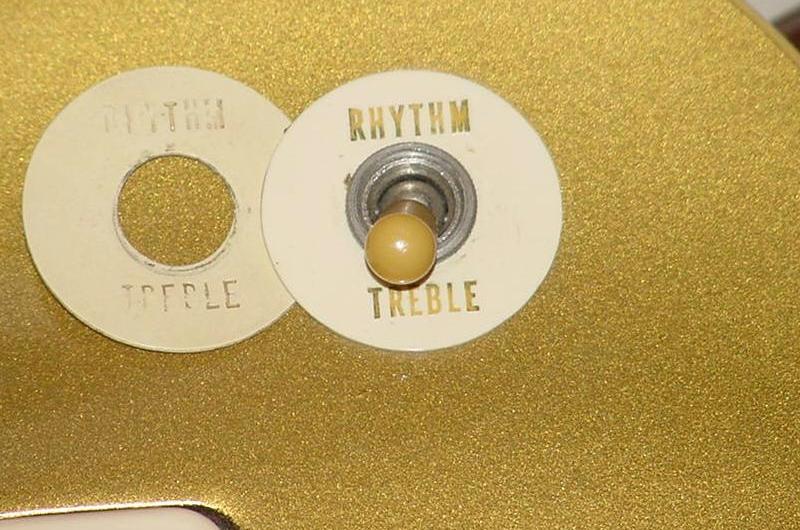
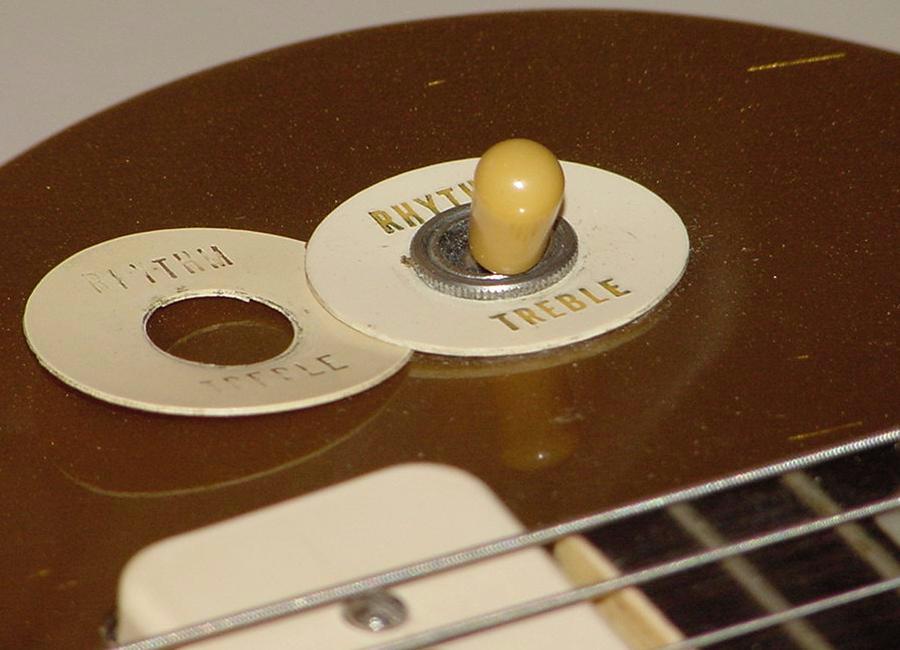
Picture thanks to Mike20.
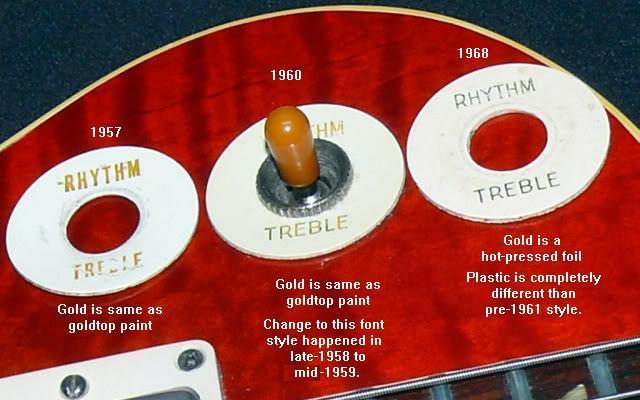
|
* Email the collector cfh@provide.net * Go to main Vintage Guitar Info webpage * Go to main Gibson Vintage Guitar Info webpage |